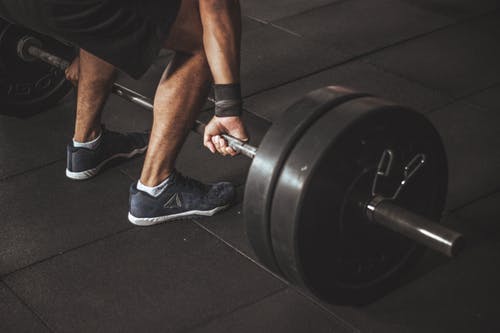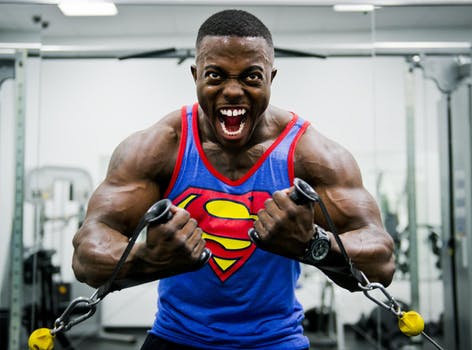I often say that strength is the foundation but plyometrics/Olympic lifts/speed/agility represent application. Strength is a critical ability for sports performance. To a point, stronger athletes have greater potential to exert force against the ground or against an object (like an opponent or a ball). Having said that, if the athlete doesn’t learn how to apply that strength then it’s not necessarily helpful. Remember, athletes don’t train just to train. Athletes train to improve sports performance.
This requires doing several things simultaneously:
- Develop total body strength. This needs to be a year-round process. I like to do this by having at least one training session each week completely devoted to maximal strength training.
- Learn how to apply that strength quickly. In my opinion, this is the real value of the Olympic lifts and their variations.
- Learn how to apply force quickly outside of the weightroom. This means plyometrics and speed/agility work.
- Finally, learn how to apply that strength in sport-specific contexts. This is referring to speed, agility, and plyometric exercises that are sport-specific.
Develop total body strength
There are a lot of ways to do this depending upon a coach’s background. Those with a powerlifting background will focus around bench press and squat/deadlift sessions. This works great. For me this approach takes too many days for non-powerlifting sessions. I like to focus on one total body session each week and move this to two sessions as the season approaches. For example, one session/week might look like:
- Back squat, 3-5×4-8×80-90%
- Romanian deadlifts, 3×4-8
- Bench press, 3-5×4-8×80-90%
- Bent-over rows, 3×4-8
- Military press, 3×4-8
Whereas two sessions per week might look like:
| Monday | Thursday |
| Back squat, 3-5×4-8×80-90%Romanian deadlifts, 3×4-8Bench press, 3-5×4-8×80-90%
Bent-over rows, 3×4-8 Military press, 3×4-8 |
Front squat, 3-5×2-6×80-90%Good mornings, 3×4-8Incline press, 3×4-8×80-90%
One-arm dumbbell rows, 3×4-8 each arm Seated military press, 3×4-8 |
This approach allows for the entire body to be trained and has a clear focus in terms of what is being developed in that training session.
Learn how to apply that strength quickly
This will also be addressed many different ways depending upon a coach’s background. It’s not unusual to see coaches combine developing strength with this step in each training session. For example:
| Monday | Wednesday | Friday |
| Power snatch, 3-5×2-4×70-80%Snatch pulls, 3×3-6×75-85%Back squats, 3-5×4-8×80-90%
Romanian deadlifts, 3×4-8 |
Push jerk, 3-5×2-4×70-80%Bench press, 3-5×4-8×80-90%Bent-over rows, 3×4-8
Military press, 3×4-8 |
Power clean, 3-5×2-4×70-80%Clean pulls, 3×3-6×75-85%Front squats, 3×3-6×70-80%
Good mornings, 3×4-8 Dumbbell bench press, 3×6-10 Pull-ups, 3×6-10 |
This approach works great. Personally, I like to split this up so that we’re focusing on one quality in a training session. For example, Monday is a maximal strength day. Tuesday is a power day. Etc. So, training might look like the following:
| Monday | Tuesday |
| Back squat, 3-5×4-8×80-90%Romanian deadlifts, 3×4-8Bench press, 3-5×4-8×80-90%
Bent-over rows, 3×4-8 Military press, 3×4-8 |
Power clean, 3×3-6×60-70%Clean pulls, 3×3-6×70-80%Push jerk, 3×3-6×60-70% |
Learn how to apply force quickly outside the weightroom
Athletes don’t just lift weights, they need to be able to jump, sprint, throw, kick, and change direction explosively. That means that at some point the physical foundation that is being developed in the weightroom needs to be taken outside it. At first, athletes need to learn how to do all these things. For example, how to jump, how to start, how to accelerate, how to stop suddenly, etc. These are taught as drills and movement skills at first.
When doing this, I like to align plyometrics and throws with power days in the weight room. I find that the two complement each other well. I like to align short distance speed/agility sessions with maximal strength sessions in the weight room. Longer distance speed/agility sessions align well with higher volume strength training. Below is an example:
| Monday | Tuesday | Thursday |
| Back squat, 3-5×4-8×80-90%Romanian deadlifts, 3×4-8Bench press, 3-5×4-8×80-90%
Bent-over rows, 3×4-8 Military press, 3×4-8 |
Power clean, 3×3-6×60-70%Clean pulls, 3×3-6×70-80%Push jerk, 3×3-6×60-70% | Split squats, 3×12-15 each legReverse lunges, 3×12-15 each legGood mornings, 3×12-15
Reverse hyperextensions, 3×15-20 |
| Speed/agility technique work, 10-15 minutesStride length drills, 3×5 meters5x5 meter sprints, standing start
Start/stop/start drill, 3x |
Vertical jumps, 10xStanding long jumps, 10xBehind back medicine ball toss, 10x | Speed/agility technique work, 10-15 minutesStride length drills, 3×40 meters5x40 meter sprints, standing start
Cone drills, 3-5x Up 2 cones, back 1 cone drill, 3-5x |
Apply strength in sport-specific contexts
After a movement foundation has been established, it’s time to put things into sport-specific contexts. The best way to do this is with speed and agility drills, the weight room is a terrible place for sport specificity. Speed and agility drills using the ball, sport situations, other players, reactive situations, fatigue, and sport movement patterns are all important. This helps to link the training to its application in the athlete’s mind, which especially with advanced athletes gives it value. It also shows the sports coach that the strength coach understand the sport and is supporting what the sports coach is preaching. This requires that everyone must be on the same page, using the same cues, etc.



